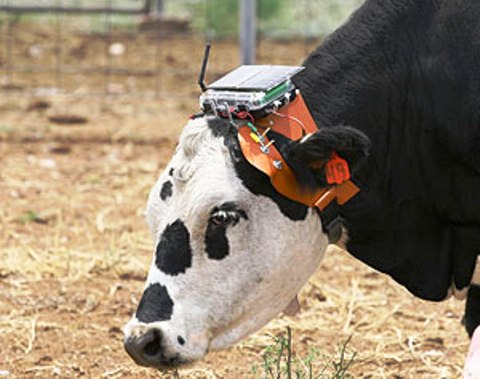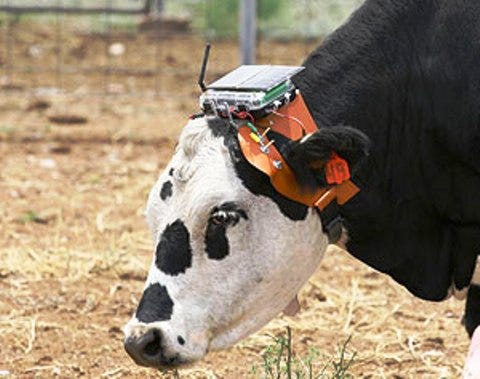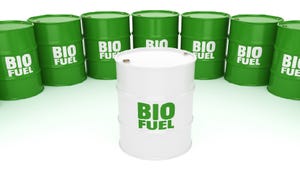
Technology today evolves at an exponential rate. Where once it took years for the next technological advancement to appear on the market, it now only takes months.
Along with this rapid rate of development our own desires have also evolved to that of a preconceived notions we must always have the latest gadget, the next big thing. Recent discussion in cattle industry social circles of an article discussing a technology currently in development, known as virtual fencing, brings light to such notions.

Unwieldy: The current design for the cattle side of the virtual fence looks cumbersome, not to mention expensive. It also fails to address necessary management skills.
The original interview on this topic with USDA Agricultural Research Service (ARS) scientist Dean Anderson was conducted by Venue in August of 2012. Until recently it had received little traction in mainstream or beef-industry news outlets.
Anderson is testing GPS units on cattle at the Jornada Experimental Range in Las Cruces, NM. The technology works much like the invisible fencing systems used for dogs. Cattle wear GPS head units that use beeps and a light shock when cattle approach boundary lines to deter them from crossing.
Boundary lines for virtual fencing can be determined, programmed, and changed much like the path and polygon features of Google Earth. In addition, cattle can be monitored either remotely or on-site via a computer and satellite.
The idea sounds good, however, I question its practicality and cost-effectiveness. The technology currently available to do something like this is expensive with limited application.
In addition the following questions are still unanswered:
How would the device be powered for extended periods?
What is a suitable size that would be comfortable and tolerable for the animal?
What design is practical to provide the necessary durability to withstand all the rubbing, beating, and banging a cow might impart on the device during its wear?
The current design (see photo here) looks anything but comfortable, tolerable or durable.
Some have suggested this technology would make managing cattle on pasture easier, leaving managers more time to tend to other things while having the real-time ability to know where their cattle are at any given time. Fences other than around the perimeter would not be necessary, reducing infrastructure costs.
Even with the proposed benefits, Anderson was admitted that while remote management is certainly a possibility, it is only so "if they have someone on the ground who has the knowledge and experience to ground-truth the data."
"Human judgment and expertise on the ground is still essential to making a methodology like this be a positive, rather than a negative, for landscape ecology," says Anderson.
In the end, proper and useful application of technology still goes back to the capability of the user. Without the background skills and knowledge, technology is useless. Nothing can replace good stockmanship skills and a boots-on-the-ground perspective when it comes to grazing management.
So, I will not throw out the possibility of virtual fencing becoming an industry reality but I think it is important we think critically and strategize about the pros, cons and expenses involved before jumping on every new technological bandwagon that rolls our way.
Like they say, the grass isn’t always greener on the other side of the fence, virtual or otherwise.
About the Author(s)
You May Also Like




